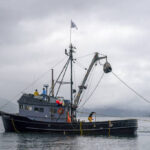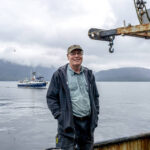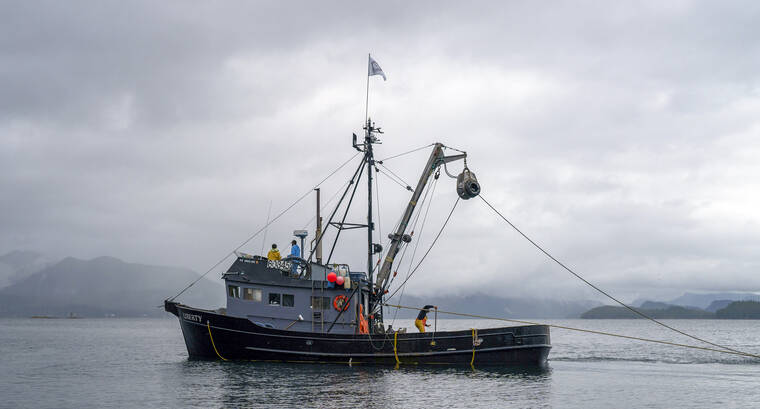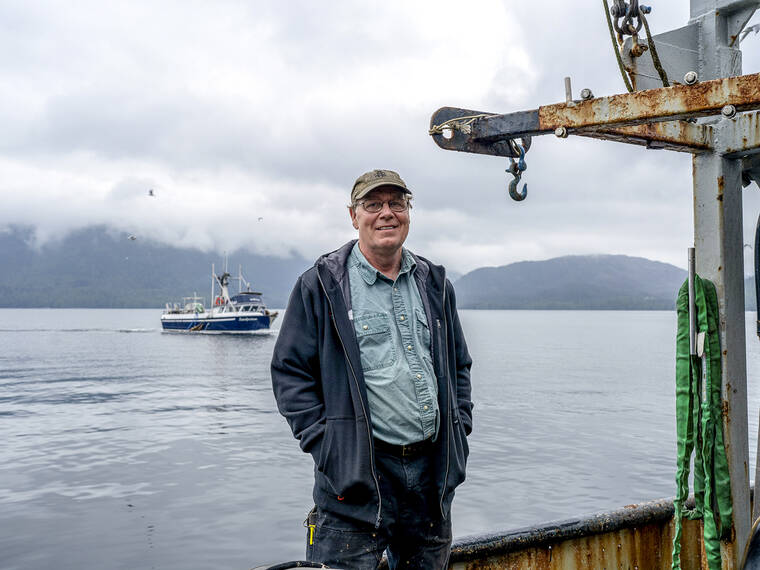For generations of Alaskans, a livelihood is under threat


Petersburg, Alaska, is as pretty a seaside town as any you’ll find across the filigree of fjords and foggy islands that make up the state’s maritime coast. Statuary and floral designs evidence its proud Scandinavian heritage, and bald eagles soar across the narrow strait that separates it from a national forest. It doesn’t have room for the giant cruise ships that disgorge thousands of passengers into Ketchikan and Juneau, but it is perfectly situated for its sustaining industry: fishing.
Norwegian fishermen settled in Petersburg in the 1800s, finding it an ideal jumping-off point to pursue salmon, crab and halibut. Hundreds of vessels now dock there and sell their catch to the two major processors, which head and gut the fish before either canning or freezing it on its eventual path to the dinner table. One of the plants was built more than a century ago, and its owner is the town’s largest private employer.
ADVERTISING
Few people know the business better than Glorianne Wollen, a fisherman’s daughter who operates a large crab boat in a partnership and also serves as harbor master, working from a tiny desk tucked into a bustling office with a little dog at her feet. A Petersburg native, she’s seen a lot of change.
“In the good old days, the town was very alive with discussion, everybody was involved so everybody had a stake, everybody knew what was going on, things happened in real time,” Wollen recalled. That buzz receded as boats got bigger and more efficient, pursued more species and stayed on the water for more of the year to maximize their investment.
“It takes two guys to do what 20 used to,” she said. “There’s just fewer of us.”
Last year, however, the local industry faced as deep a crisis as anyone could remember — even those who had seen the ups and downs of fishing for generations.
It wasn’t a lack of fish. With a few exceptions, the runs were nearly as good as they’ve ever been. But toward the end of last summer, nobody wanted to buy them. Processors, having already slashed by half the prices they paid fishermen for salmon, started turning them away entirely.
The reasons are complex. Over the past few years, the $6 billion Alaskan wild seafood market has been mired in a mix of geopolitics, macroeconomics, changing ocean temperatures and post-COVID whiplash that piled on top of long-building vulnerabilities in the business model.
Inflation-weary consumers turned from fish to less expensive protein sources like chicken. The strong dollar and the collapse of the yen made it difficult to sell to Japanese consumers, who have been eating less fish and high-value roe than generations past. And Russia — straining under sanctions to finance its war in Ukraine — began dumping salmon and pollock, the white fish used in fish sticks and filet-of-fish sandwiches, into the U.S. market. Even for an inherently cyclical industry, the convergence of problems — decreasing industry revenues by $1.8 billion and state and local tax collections by $269 million, according to the Commerce Department — has no historical parallel.
“We’ve never seen everything bottom out at the same time,” said Jeremy Woodrow, CEO of the Alaska Seafood Marketing Institute, a publicly funded nonprofit. “Because of all these different economic factors coming together, all the levers have been pulled down.”
Prices rebounded slightly this year, but the economic pressure remains on everyone from the single-handed gillnet fishing boats to the ships that scoop pollock from the Bering Sea. In the past year, some of the processors sold or idled their plants; one entered receivership.
Now the industry and the communities throughout Alaska that depend on it are trying to figure out a path forward. Fish processors are facing a globalization shock not unlike the one that began to decimate American manufacturing in the 1980s, and they want help to avoid a similar fate.
“It really sends shock waves through the harvesting sector when you see processors go under,” said Nels Evans, the director of the Petersburg Vessel Owner’s Association. “In the last year there’s been a lot of coming into the middle, everyone realizing we all need to survive in order for the industry to survive.”
In 2023, millions of pounds of pollock and salmon from Russia started showing up on the market. Unlike Alaska, Russia isn’t burdened by restrictions designed to maintain a small boat fleet and prevent overfishing.
Even in the pollock fishery, which is regulated by the federal government and allows larger vessels in order to operate on rough seas farther from shore, Americans are at a disadvantage: By law, their boats must be constructed in the United States. Shipyard capacity is scarce and costs are high, preventing U.S. fishing companies from investing in state-of-the-art equipment that would lower operating costs.
That’s a problem for some private equity investors who bought into the industry in recent years, but it’s also a threat to the Alaska Native communities that have rights to a share of the pollock quota. Harvesting it employs tribal members and funds community services.
Eric Deakin is the CEO of the Coastal Villages Region Fund, which supports 20 communities on Alaska’s far west coast. Last year’s plummeting pollock prices drained the organization’s reserves, and this year isn’t looking any better.
“If we don’t see some light at the end of the tunnel by the end of next year, we’re going to have to make some deep cuts,” Deakin said. Anything from job training to transportation equipment could be on the table.
The challenges haven’t stopped. High interest rates weighed on processors, which have to borrow to pay fishermen before they sell the product. Retailers shifted to just-in-time ordering, forcing the factories to hold inventory in freezers longer.
Some processors are trying to make an end run around the industry’s increasingly tough math, this time with an assist from the U.S. Department of Agriculture.
One of them, Circle Seafoods, is incubating in a Native community on Alaska’s far southeastern tip called Metlakatla, on a sparsely populated island accessible only by ferry, seaplane and, of course, fishing boat.
The project is the brainchild of Pat Glaab, who designed and built processing plants for other companies before striking out on his own. Circle landed nearly $22 million in USDA-backed loans to build a mobile processor on an old oil barge in Washington state and wanted to start operating in Alaska while it was under construction, to work out kinks in its processes.
Conveniently, the Metlakatla Indian Community had an idle processor that it wanted to revitalize. When it was built 100 years ago, the Annette Island Packing Co. was supposed to sustain the town, through both employing residents and buying fish from the local fleet. Its longtime manager retired, and another operator pulled out in 2018, forcing the town’s fishermen to sell their catch in nearby Ketchikan. Circle’s gambit is predicated on delivering better-quality salmon at lower cost than other processors, generating higher demand at an affordable price. The key, according to Glaab, is to rapidly deep-freeze the salmon whole, preventing any deterioration.
“If you could take that fish and make it really valuable, there’s no single thing you could do that would be better for the economy of Alaska,” Glaab said.
When Circle launches its barge next year, the plan is to turn the upgraded Annette Island plant back over to Metlakatla. Having a local processor would provide employment and keep profits local — the kind of asset that many Alaska towns are worried they could lose.
Even if the technical challenges of consistently delivering perfect fish to market are solved, that leaves international competition, aging capital-intensive infrastructure and consumers who still predominantly opt for other animal proteins — despite, as the fishing industry eagerly points out, seafood’s advantages for human health and the climate.
In recent months, the White House banned Russian fish from being sold in the United States, blunting further price declines. The federal government also bought hundreds of millions of dollars’ worth of salmon and pollock for food assistance programs to clear out unsold inventory.
But many fishermen and their processors want the federal government to go further than a few food purchases and one-off loans. Historically, the seafood industry hasn’t received the attention bestowed on manufacturing and has fallen between the cracks of regulators at the Commerce Department and subsidies housed at the Department of Agriculture.
Nobody thinks fishing is going away. But Jim Floyd, the store’s general manager, worries the industry will not fully recover. As president of the local Chamber of Commerce, he’s seeking other ways for Petersburg to keep thriving.
“I told everyone it was going to be a tough year this year, and I don’t see it getting better next year,” said Floyd, sitting in a board room at the back of the cavernous hardware store, stuffed with both boating gear and tourist wares. “We just need to shift the economy. We can’t be so dependent on one thing.”
This article originally appeared in The New York Times.
© 2024 The New York Times Company






